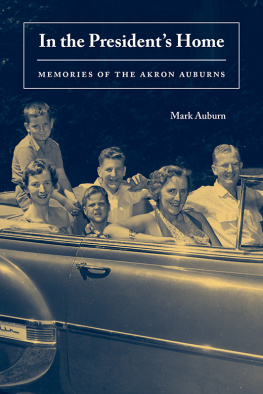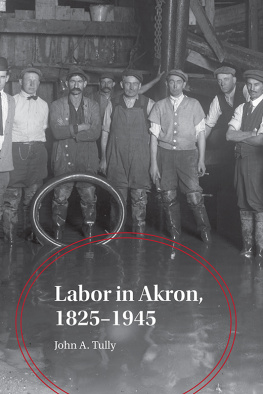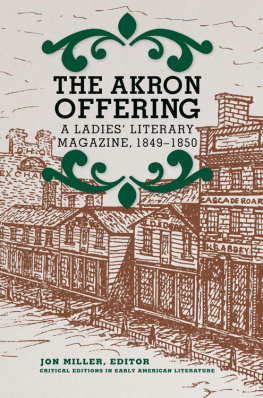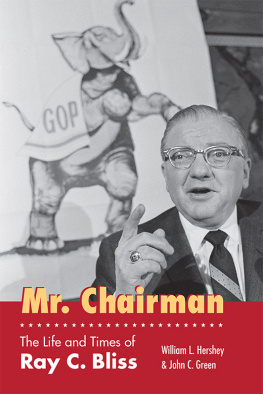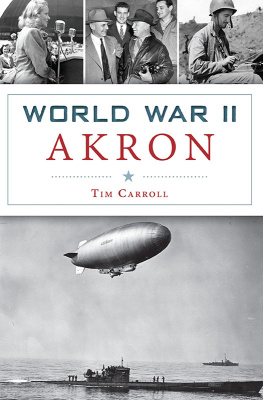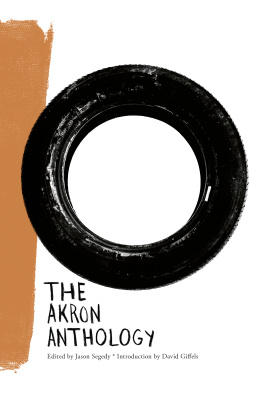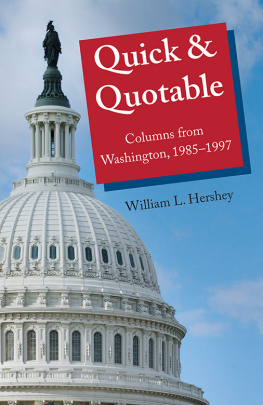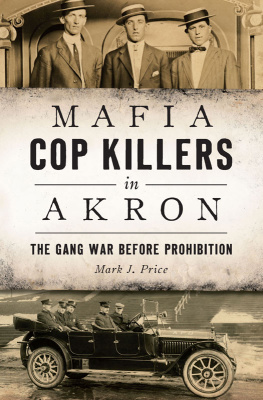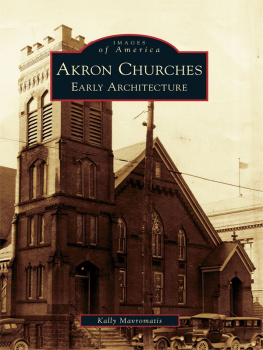ADVANCED PRAISE FORIN THE PRESIDENTS HOME
A wonderful read filled with factual and historically accurate details of the times and events in the day-to-day lives of Dr. Norman Auburn, his charming wife Kay, their children, and assorted family members. Written almost to the point of diary entrees, so precise yet filled with colorful details of events, bringing new life into the business community and the excitement of life in a growing town.
The Auburns were an integral part of Akron, beloved and respected. They represented Akron to all guests not only as a lively and beautiful college town on the move but as an industrially motivated town growing and thriving in the aftermath of war.
Patricia Graves, University of Akron Trustee Emerita
To open the pages of Mark Auburns book is to open the front door of the presidents home and enjoy all they had to offer in an age of tremendous growth and opportunity for The University of Akron under the leadership of a remarkable man. President Norm Auburn and his wife Kay Auburn made it clear for the duration of Dr. Auburns presidency that their home was a welcoming place to all university familyfaculty, staff, and students.
I was inspired by the energy and dedication Norm Auburn had for all his endeavors. The scope of President Auburns professional activities is remarkable and Marks accounting of his dads many faceted career is historically significant not only to the Auburn family, but to the entire Akron community.
Rene Sandefur Pipitone, daughter of Ray Sandefur, founding Dean of
The University of Akron College of Fine and Applied Arts
In the Presidents Home is a tapestry of family history and numerous memories of what it was like to grow up in the Midwest during and after the Second World War with a father who achieved his American Dream of being a college president and a charming, bright, and extroverted wife who was at his side along the way with their four children.
Under Dr. Auburns steady hand the university grew in stature and importance and became the center of activity for our community, while the presidents home was continuously alive with students and their parents, community leaders, visiting dignitaries, extended Auburn family gatherings, and Kays famous teas. It was an era in our community, generally speaking, of growth, prosperity, and culture, with the American Dream just around the corner, in which Dr. Auburn played an important role.
Frances Seiberling Buchholzer
Series on Ohio History and Culture
Kevin Kern, Editor
Joyce Dyer, Gum-Dipped: A Daughter Remembers Rubber Town
Melanie Payne, Champions, Cheaters, and Childhood Dreams: Memories of the Soap Box Derby
John Flower, Downstairs, Upstairs: The Changed Spirit and Face of College Life in America
Wayne Embry and Mary Schmitt Boyer, The Inside Game: Race, Power, and Politics in the NBA
Robin Yocum, Dead Before Deadline: And Other Tales from the Police Beat
A. Martin Byers, The Ohio Hopewell Episode: Paradigm Lost and Paradigm Gained
Edward C. Arn, edited by Jerome Mushkat, Arns War: Memoirs of a World War II Infantryman, 19401946
Brian Bruce, Thomas Boyd: Lost Author of the Lost Generation
Kathleen Endres, Akrons Better Half: Womens Clubs and the Humanization of a City, 18251925
Russ Musarra and Chuck Ayers, Walks Around Akron: Rediscovering a City in Transition
Heinz Poll, edited by Barbara Schubert, A Time to Dance: The Life of Heinz Poll
Mark D. Bowles, Chains of Opportunity: The University of Akron and the Emergence of the Polymer Age, 19092007
Russ Vernon, West Point Market Cookbook
Stan Purdum, Pedaling to Lunch: Bike Rides and Bites in Northeastern Ohio
Joyce Dyer, Goosetown: Reconstructing an Akron Neighborhood
Robert J. Roman, Ohio State Football: The Forgotten Dawn
Timothy H. H. Thoresen, River, Reaper, Rail: Agriculture and Identity in Ohios Mad River Valley, 17951885
Mark Auburn, In the Presidents Home: Memories of the Akron Auburns
Titles published since 2003.
For a complete listing of titles published in the series,
go to www.uakron.edu/uapress.
In the Presidents Home
MEMORIES OF THE AKRON AUBURNS
Mark Auburn

Copyright 2019 by The University of Akron Press
All rights reserved First Edition 2019 Manufactured in the United States of America.
All inquiries and permission requests should be addressed to the Publisher,
The University of Akron Press, Akron, Ohio 44325-1703 or .
ISBN: 978-1-629221-35-9 (paper)
ISBN: 978-1-629221-33-5 (ePDF)
ISBN: 978-1-629221-34-2 (ePub)
A catalog record for this title is available from the Library of Congress.
The paper used in this publication meets the minimum requirements of ANSI/NISO z39.481992 (Permanence of Paper).
Cover: Photo by Lou Tobias, from the Norman Auburn Papers. Courtesy of Archival Services, University Libraries, The University of Akron. Cover design by Amy Freels.
In the Presidents Home was designed and typeset in Adobe Caslon Pro by Amy Freels and printed on sixty-pound white and bound by Bookmasters of Ashland, Ohio.
The excerpt on .
For Rebecca and Nora
Contents
My father, Norman Auburn, served as President of The University of Akron from 1951 to 1971, the longest period of any person before or since. Under his leadership the university moved from municipal to state status. It added community college and doctoral missions, consolidated and expanded its research capacities, adopted a law school and joined in creating an affiliated medical university, physically expanded and built onto its downtown Akron hilltop location, organized a regional campus, completed its first public fund-raising campaign, and quadrupled in enrollment from 4,500 to 20,500 students. By 1990, it was the third-largest university in Ohio.
Auburn was a forty-six-year-old father of four when he became president. His wife, Kathleen Montgomery Auburn, was the daughter of a Presbyterian minister and three-time college president. Their backgrounds and early experiences in Cincinnati help explain why Norm was chosen to lead the small municipal university in northeast Ohio. When they came to Akron, their children included a college sophomore, a high school sophomore, a first-grader, and a handicapped four-year-old. They lived first in their own Tudor-style four-bedroom home but in 1956 relocated to a much more spacious seven-bedroom five-bath Georgian colonial donated to the university by the former Chairman of Goodyear Tire and Rubber Company, Paul W. Litchfield.
Conceiving their service to the university and the community like that of a minister and his family living in a manse, they entertained extensively and lived in the public eye while raising their three oldest children to adulthood and marriage and guiding their youngest to a comfortable lifelong custodial situation. Seen through the eyes of their third-born child, how they entertained, what they ate, how they exercised, when and where they vacationed, the things they acquired and used reflect day-today life in America and Akron in the 1950s and 1960s from behind the public faces of a well-known servant-leader and his family. In retirement from his Akron presidency, Norm became an itinerant rent-a-president for six other colleges and universities, was widowed and remarried, and extended a private-sector banking career which moved him from the genteel sufficiency of public service to a comfortable plenty that assured the lifelong maintenance of his handicapped child.

